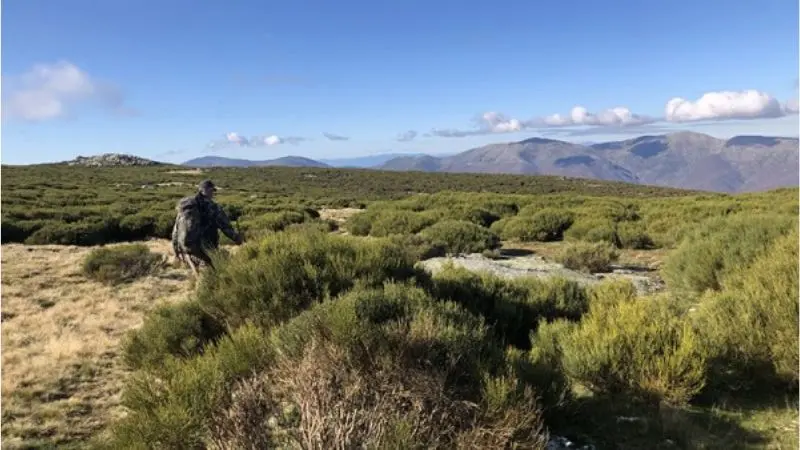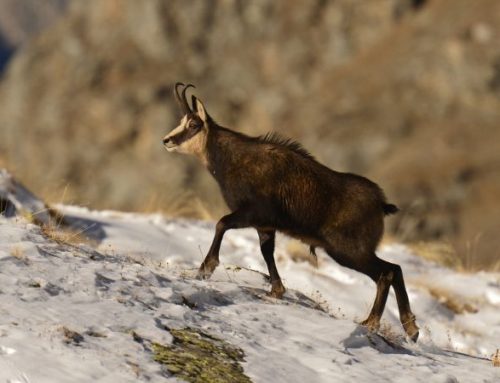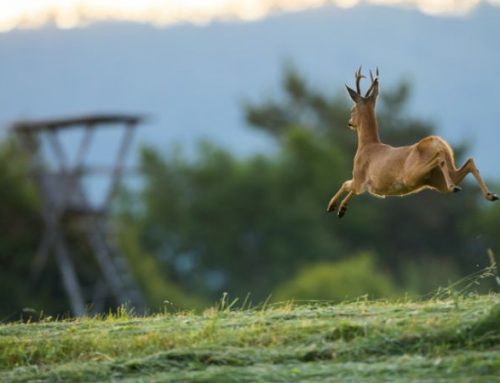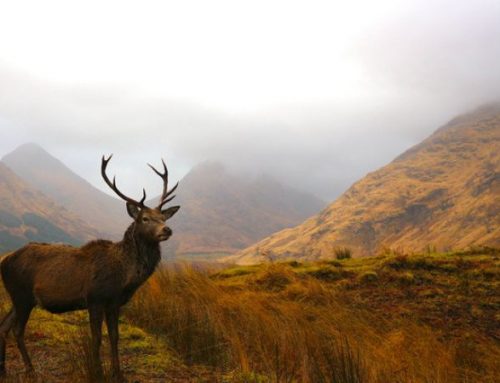Among rivers of rosemary and thyme, on the rugged Spanish sierras, you can pursue the dream of the Spanish Grand Slam.
Imagine an absolute silence, the only sound being the subtle crunch of the rocky ground, speckled with thyme and rosemary, crumbling under your boots.
In the distance, you can see the ibex, distributed like patches on the mountains of Spain, with their dark chests and beards contrasting against the light-colored rocks, while the salty aroma of the air sharpens your senses.
The Spanish Grand Slam is a must for every hunter passionate about ungulates, consisting of hunting the four ibex: Beceite, Gredos, Ronda, and Sierra Nevada.
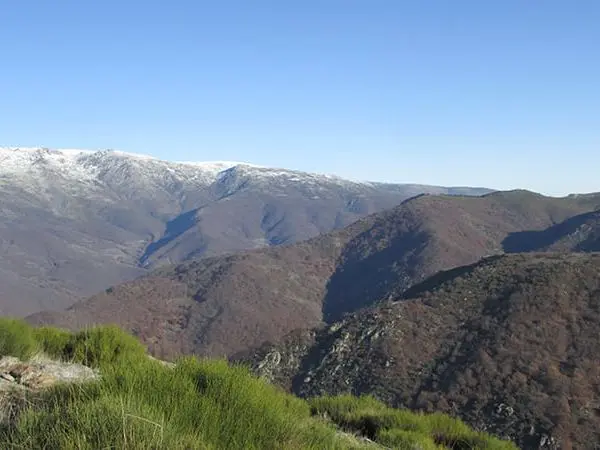
The Spanish ibex is a powerful animal. Its dark brown coat is marked with ochre and rust spots, and its short, strong legs are capable of navigating the region’s typical rocky terrain. Its horns, with their characteristic lyre shape, make it particularly distinctive.
In the mountains sadly known for the civil war, between Barcelona and Valencia, the “Beceite” is the first ibex usually pursued to “collect” the four Spanish wonders.
Majestic and powerful, it leaps on the herb-scented, salt-bathed rocks from which you can admire the sea and the mouth of the Ebro, famous for its duck-rich marshes.
Beyond Madrid, in Extremadura, one can hunt the Gredos ibex, the largest and most challenging to hunt due to the rugged terrain and its cunning nature.
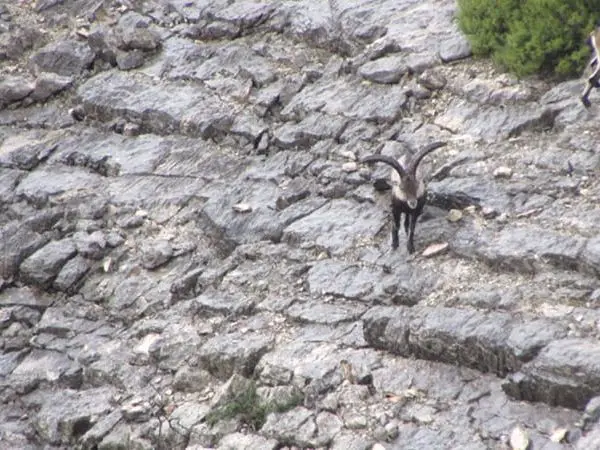
Among the “pueblos blancos” of Andalusia, between the Mediterranean and the Atlantic Ocean, the two small ibexes of Ronda and Sierra Nevada complete the Spanish Slam in a unique harmony that captivates the hunter beyond the act of hunting: extraordinary food and breathtaking landscapes in a total immersion into the culture of this splendid nation.
All these mountainous areas are characterized by rocky and thorny terrains, valleys, and thrilling cliffs, but are softened, especially in the early months of the year, by beautiful blooming almond trees, symbols of hope.
The scent of thyme and rosemary, which drifts from the ridge to the valley floor, will accompany you in the pursuit of the Spanish ungulates.
These animals prefer high altitudes, lightly defying the void and verticality. Chasing these clever ibexes means rising to heights above 1400 meters, often only reachable on foot, among rocks and thorns where only hunters with good physical preparation and endurance can maintain their balance.
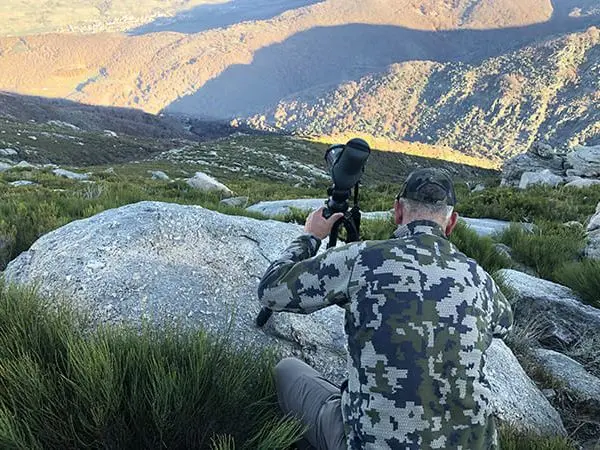
Hunting in Spain is an adventure that blends the thrill of the chase with the timeless romance of its landscapes. The ibexes, their movements as unpredictable as the wind that whispers through the jagged cliffs, graze gracefully in herds. Among them, the old male—majestic and wise—stands as the ultimate prize. Hidden within the safety of his group, shielded by the vigilant eyes of younger males and the nurturing presence of females, he demands more than skill; he demands reverence, patience, and an unwavering commitment to the hunt.
Every step along the rugged mountain paths is a journey into a world untouched by time. The breathtaking scenery of Spain’s wild terrain unfolds like a painter’s masterpiece, with each peak and plateau offering new challenges and unparalleled beauty. As you stalk your prey, your senses awaken to the rhythm of nature, your heart pounding not only with the effort of the climb but also with the anticipation of the hunt.
But it’s not just the ibex or the landscape that captures the heart of the hunter in Spain. The experience is steeped in a culture as vibrant as the sunlight that kisses the ancient hills. The melodic cadence of the Spanish language, the heartfelt strains of traditional music, and the warm hospitality of the locals wrap around you like a cherished memory. Each evening, after the day’s pursuits, you’ll find yourself immersed in the flavors of Spanish cuisine and the stories of kindred spirits, all woven together to create a tapestry of moments that stay with you forever.
The hunt itself is more than a pursuit of the animal; it is a dialogue with the land and its traditions, a dance of respect and determination. The effort, the fatigue, the triumph—they all culminate in a profound connection to the wild spirit of Spain.
For those who dare to seek it, the Spanish Grand Slam offers a challenge unlike any other. The ibex in its varied forms—Beceite, Gredos, Southeastern, and Ronda—invites hunters to test their mettle across regions as diverse as their quarry. Success is not only measured by trophies but also by the memories etched into the soul.
And so, the call of Spain’s wild heart lingers, irresistible. Once you have tasted the passion of hunting in Spain, the desire to return is inevitable. The mountains beckon, the ibex awaits, and the promise of adventure burns bright. Will you answer?
The Spanish ibex, a symbol of wild elegance and resilience, possesses a fascinating array of traits that elevate it beyond its reputation as a prized game animal. While much is said about their horns and their mountain habitat, there are nuances to these creatures that often remain untold, secrets of their existence that make the hunt even more enthralling.
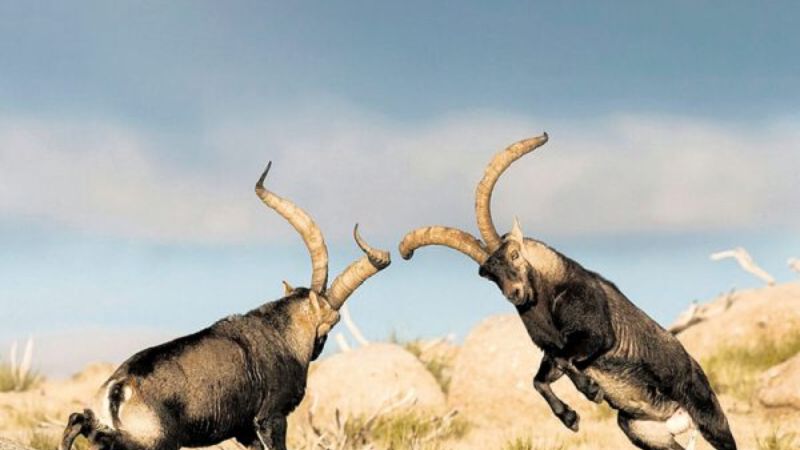
Unwritten Curiosities About the Spanish Ibex
- Horns as a Living Chronicle: The horns of the Spanish ibex do more than showcase their magnificence; they are a living diary of their life’s journey. Each groove and ridge represents a year of growth, but the depth and spacing of these markings can reveal periods of stress, harsh winters, or bountiful seasons. Hunters who examine these details gain insights into the ibex’s survival story, making each trophy a piece of living history.
- A Social Puzzle: Contrary to their seemingly rigid social structures, the dynamics within ibex herds are fluid and complex. Older females often assume the role of sentinels, strategically placing themselves to spot threats and guide the group. This is not just maternal instinct but a learned behavior passed down through generations, a form of “herd intelligence” unique to these mountain dwellers.
- Vocal Range and Communication: Spanish ibexes are not silent creatures. Their vocal repertoire includes grunts, snorts, and even soft bleats that vary depending on their intention—warnings, mating calls, or simple expressions of contentment. Hunters who spend enough time observing them begin to decode this subtle language, gaining an edge in understanding the herd’s behavior.
- Seasonal Transformations: While most know the Spanish ibex for its robust coat, few realize the transformative nature of their seasonal pelage. In winter, their fur thickens and darkens, not just for warmth but as a form of camouflage against the snow-dusted mountains. Come spring, this coat sheds, revealing lighter hues that blend seamlessly with the rocky terrain.
- Unparalleled Agility: The ibex’s ability to scale near-vertical cliffs is legendary, but what often goes unnoticed is the biomechanics of their climb. Their hooves are specially adapted with a soft, spongy core that grips rock surfaces like climbing shoes, while the outer rim provides stability on slippery edges. This precision allows them to ascend areas even the most experienced mountaineers would find daunting.
- Taste for the Unusual: While their diet primarily consists of grasses and shrubs, ibexes exhibit an occasional preference for certain aromatic plants like thyme and lavender. This peculiar palate not only nourishes them but also subtly scents their coats, an unexpected bonus for hunters who get close enough to notice.
- Magnetic Terrain Navigation: Studies on ungulates suggest a mysterious ability to navigate using the Earth’s magnetic field, and the Spanish ibex appears to be no exception. This innate “compass” helps them traverse expansive ranges without getting lost, often returning to the same sheltered ridges for safety during storms.
- Invisible Fights of Dominance: While dramatic horn clashes are well-documented during rutting season, dominance battles in ibex herds often begin long before the physical fight. Subtle behaviors such as head tilts, eye contact, and specific stances act as precursors to combat, with some disputes resolved without a single blow being exchanged.
- Lifespan Secrets: An ibex’s lifespan in the wild averages around 12-15 years, but some individuals have been known to reach nearly 20 years in particularly protected environments. These elder ibexes, often elusive and solitary, are living testaments to survival, and their presence is considered a rare and honorable sighting.
- Guardians of Biodiversity: Beyond their role as game animals, Spanish ibexes are key players in maintaining the ecological balance of their habitats. By grazing selectively, they prevent overgrowth of certain plant species, which in turn supports a diversity of flora and fauna. Their movements through steep terrains also help distribute seeds, fostering new growth in challenging environments.
Hunting the Spanish ibex, then, is not merely the pursuit of a magnificent trophy—it is a journey into the intricate, untamed life of a creature that thrives in some of the harshest landscapes on Earth. Each step of the chase is steeped in the whispers of their untold stories, deepening the romance of hunting in Spain.

